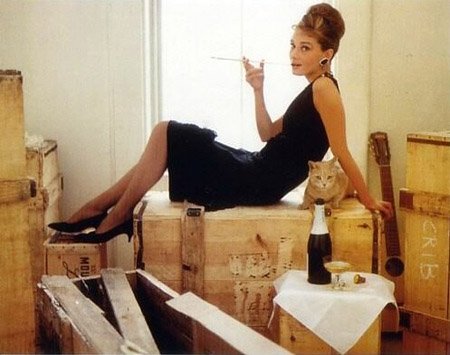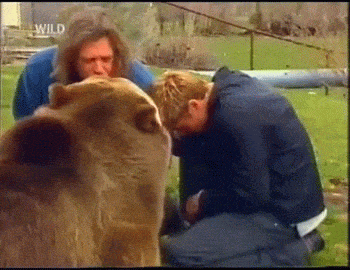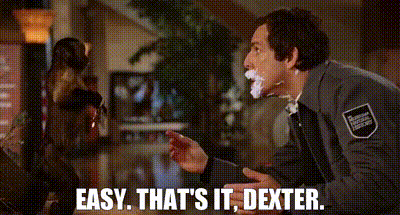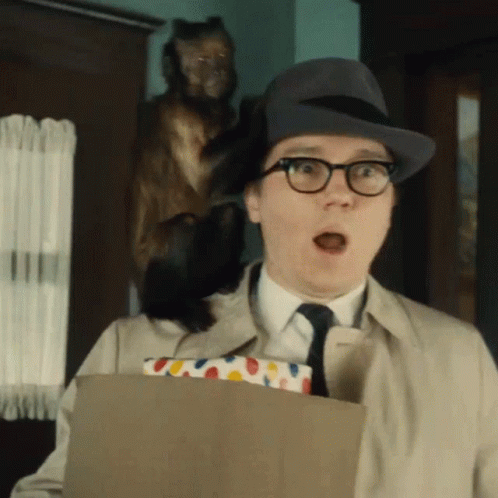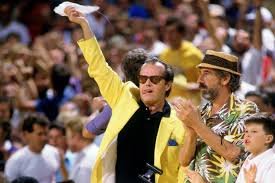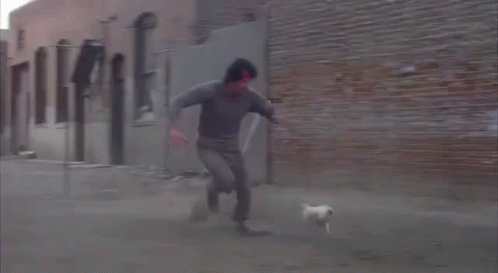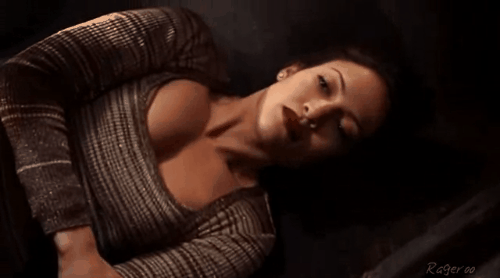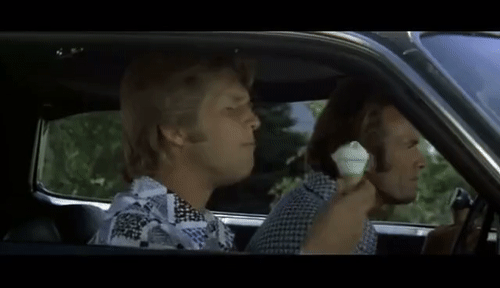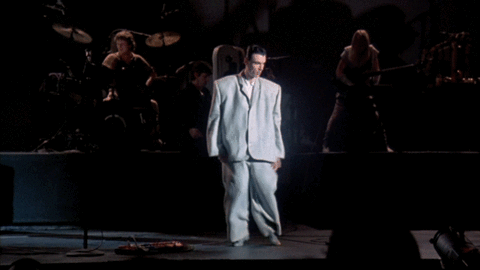No Goats Among GOATs: Five Of The Best Animal Actors In Film History
Five decades ago Vito Corleone slapped Frank Si-err-um-I mean, Johnny Fontaine in The Godfather, while demanding “YOU CAN ACT LIKE A MAN!”.
Men and women have been onscreen acting like men, women, both, and/or otherwise since the American Hollywood film industry started moving silently, in sunny Southern California, around the start of decade two marking the twentieth century.
C’est La Vie!
There’s been loads of literature, award ceremonies, broadcasts, channels, websites, publications, plus podcasts, across many vessels of technological gadgetry, dedicated to its documentation since.
What often gets drown out amidst all the ongoing applause are all the strong contributions from non-human performers, those with fins and beaks, paws and claws. A closer look at celluloid history reveals that many memorable animals have been acting brilliantly alongside their human counterparts, ever since that magical motion-picture ride propelled by unspooling projection reels got started.
Today’s episode of The Five Spot is dedicated to honoring a selected few of their stories.
Get your popcorn ready.
This is “No Goats Among GOATs: Five Of The Best Animal Actors In Film History”.
Orangey The Cat
Years Active: 1950-1967
Sex/Species: Male Marmalade Domestic Tabby Cat
Credits: Breakfast At Tiffany’s, Rhubarb, The Diary Of Anne Frank, Village Of The Giants
Aliases: Cat, Orangey Minerva, Rhubarb, Neutron, Cleopatra, Giant Cat
Co-Stars: Audrey Hepburn, Anthony Perkins, Shirley MacLaine, George Peppard, Shelley Winters
Catchphrase That Pays: Meeow or Rrreaow
Acting Anthropomorphic: Cat seems far more acutely aware of how an alarm clock works and what it means than his adorable roommate.
Best Onscreen Chemistry: C’mon, now…there can be no other remotely acceptable answer than Audrey. Even when she kicks Cat out the cab, Orangey displays proper amounts of hesitation, making their rainy reunion even more affecting.
Problematic Displays On-Set: Orangey’s behavior on a film shoot during the sixties might have been second-worst of the decade only to Marlon Brando. Reports of hissing, scratching, even occasionally biting co-stars not named Audrey Hepburn were reported. But Orangey was also fiercely dedicated to his craft like Brando, willing and able to work long hours while delivering the goods in performance.
Best Performance: Breakfast At Tiffany’s
Key Scene: It’s a two-kitty-race between the opening apartment scene or the climatic final frames in the alley. You can judge for yourself at the end of this entry (SPOILER ALERT on the video). But it’s no accident that both featured the film’s three biggest stars (Hepburn, Peppard, and yes Orangey, let’s not even get into the problematic Asian landlord caricature portrayed by Mickey Rooney) collaborating in close quarters.
Theme Music: “Moon River” in any of this film’s three or four incarnations. That’s right, this movie is so old that “Moon River” was a new song written for it back then by Henry Mancini. For my eyes and ears, I’ll always prefer the fire escape strummed version sung by my girl Audrey.
Critical Bona Fides: The only feline to win two PATSY Awards (the Animal Actor Oscar Equivalent from 1951 thru 1976) in motion-picture history, first winning as the lead in the inaugural edition of the show, hosted by Ronald Reagan, for 1951’s Rhubarb as a rookie, then Breakfast At Tiffany’s as Cat a full decade later.
Bart The Bear
Years Active: 1977-2010
Sex/Species: Male Kodiak Bear
Credits: Clan Of The Cave Bear, White Fang, The Great Outdoors, The Bear, On Deadly Ground, Legends of the Fall, 12 Monkeys, The Edge, Homeward Bound, Meet The Deedles.
Aliases: Grizzly Adams, Cave Bear, Bald-Headed Bear, Big Bear, Circus Bear.
Co-Stars: Darryl Hannah, Dan Akroyd, John Candy, Annette Benning, Robert Redford, Morgan Freeman, Steven Seagal, Michael Caine, Ethan Hawke, Brad Pitt (twice), Anthony Perkins (twice), Bruce Willis, Alec Baldwin, Christopher Plummer, John Denver.
Catchphrase That Pays: ROAR!!!
Acting Anthropomorphic: Bart the Bear was introduced onstage while co-presenting an award with Mike Myers at the 1998 Oscars.
Best Onscreen Chemistry: It seems tough to have chemistry onscreen with a large bear, because in the movies bears and humans are typically adversaries. Which makes you wonder how many scenes were shot together. As much as I loved The Edge, Sir Anthony Hopkins being able to outrun a bear outdoors strains credulity. The only thing less believable is Steven Seagal being able to beat up a nine-foot-tall bear, even while losing is a requirement for any actor opposite Seagal onscreen in a movie. Especially one Seagal directed.
But many attest to the fact that Hopkins and Bart spent full days on shoots together, so despite Hollywood camera tricks, there seemed to be a man-bear bond established.
Problematic Displays On-Set: For an enormous animal that could gut you like a fish with a swipe of the claw or fit your whole head and neck in its jaw, all involved say Bart was expertly trained by Doug & Lynn Seus, while safely well-behaved on the job.
Best Performance: The late-career triumph of The Edge gets the edge.
Key Scene: Bouncing on a door atop John Candy, chasing Anthony Hopkins thru woods, staring down the end of Brad Pitt’s barrel in Legends Of The Fall, facing cub-killer Tchéky Karyo on a cliff in The Bear. Too many to list.
But let’s roll with this classic Candy clip just for giggs and the cliff confrontation for shits.
Theme Music: On sections like The Edge’s “Deadfall/Bear Chase”, the tension-building strings set-up propulsive percussion while low-end-brass stabs make Jerry Goldsmith’s bear score soar.
Critical Bona Fides: Directors referred to him as “The John Wayne of Bears”.
LA Times critic Kenneth Turban, in his ’97 The Edge review, opined: “They don’t give Oscars for best supporting bear, and Bart is probably not on the American Film Institute’s short list for a lifetime achievement award. But his performance here, the capstone of an illustrious career, is a milestone in ursine acting. Here’s hoping the big guy didn’t have to work for scale.”
Bravo, Bart.
Crystal The Monkey
Years Active: 1994 to Present
Sex/Species: Female Capuchin Monkey
Selected Credits: George Of The Jungle, Dr. Doolittle, American Pie, Dr. Doolittle 2, Night At The Museum(s), The Shaggy Dog, Failure To Launch, 3:10 to Yuma, The Hangover II & III, We Bought A Zoo, Zookeeper, The Fabelmans.
Aliases: Monkey, Drunk Monkey, Dexter, Donald, Drug Dealing Monkey, Bennie.
Co-Stars: Brendan Fraser, Eddie Murphy, Jim Carrey, Natasha Lyonne, Robert Downey, Danny Glover, Ben Stiller, Robin Williams, Russell Crowe, Christian Bale, Matt Damon, Elle Fanning, Scarlett Johansson, Bradley Cooper, Ed Helms, Ken Jeong, Zach Galifianakis, Heather Graham, Rosario Dawson, Michelle Williams, Sarah Jessica Parker.
Catchphrase That Pays: tee-tee-tee, giggle-shriek.
Acting Anthropomorphic: Crystal works red-carpet premieres like a Hollywood diva, understands 60 to 70 English words, and can appropriate a capuchin variation of break-dancing on or off camera.
Best Onscreen Chemistry: Crystal was so convincing as a troll of co-star Ben Stiller that Stiller allegedly hates her slap-happy, sarcastic-squeal-laugh, monkey-ass in real life.
Problematic Displays On-Set: Steven Spielberg was protested by PETA for using a “real monkey” on the set of 2022’s The Fabelmans. They cited his ability to use animatronics on E.T. and Jurassic Park as evidence he could make films without endorsement of the animal-training industry.
Our questions for PETA would be “so you saw E.T. but you missed Raiders of the Lost Ark?” and “can you put some respect on Crystal’s name?”.
Best Performance: Without having seen the aforementioned Fabelmans, with apologies to Hangover II & III (neither of which measured up to the O.G. despite Crystal’s best efforts), we’d probably have to go with Night At The Museum.
Signature Scene: For all the unbridled drug-fueled Bangkok energy of Krystal’s scenes in Hangover 2, this doorstep drop smoke scene with Galifianakis borders on emotionally affecting. If you listen, you can almost hear her say “I’ll miss you too”. And relax, folks, the smoke was digitally added in post.
Theme Music: 1972’s “Pusherman” by the late great Curtis Mayfield from Superfly is used to introduce us to Crystal’s drug-dealing, denim-Stones-jacket-rocking, monkey-mule middle-man. Meanwhile five decades after the fact it still sounds fresh to death, much like it did in 1988 when Ice-T cribbed it for “I’m Your Pusher”. Someone give this jam the thorough Wikipedia page it deserves already.
Critical Bona Fides/Legacy: First animal to command a five-figure per-episode salary/sitcom deal. Crystal’s films have grossed 2.5 billion-dollars worldwide. Described by several co-stars as the greatest actor they’ve worked with, while now entering into the third decade of her film career.
Keiko The Killer Whale
Years Active: 1993 (on film) thru 1998 (as an Oregon Coast Aquarium attraction pre-staggered-release-back-into-the-seas)
Sex/Species: Male Orca, commonly known as a Killer Whale in the twentieth century despite being a member of the dolphin rather than whale family.
Selected Credits: Free Willy and Keiko: The Untold Story
Aliases: Willy, Keiko, The Breakwudder Bandit (okay, I made that last one up)
Co-Stars: Jason James Richter, Lori Petty, Michael Madsen fresh off the heels of severing a cop’s ear as Mr. Blond in Reservoir Dogs, Jayne Atkison, August Shellenberg, Mykelti Williamson, Danielle Harris, Michael “You May Not Know My Name But You Recognize My Villainous Face” Ironside
Catchphrase That Pays: the sound of a blowhole expelling or dolphin kee-kee-ing.
Acting Anthropomorphic: Keiko played follow-the-leader better than most kids.
Best Onscreen Chemistry: the chemistry between two actors both making their film debuts, Jason James as Jessie the orphan and Keiko as Willy the orphaned Killer Whale, is the thread that holds a modestly budgeted family drama together, and sparks an international blockbuster with a thirty-year-and-counting shelf life. It turned out to be the apex of both their careers. Showbiz is finicky.
Problematic Displays On-Set: Keiko was undersized for his species, potentially due to being raised mostly in captivity at an early age. He also developed skin conditions due to water temperatures being too warm for his blood, which are visible at times if you’re looking.
Best Performance: Free Willy. That’s it…that’s the list…and that’s enough.
Signature Scene: It’s gotta be the leap to freedom seen on the poster.
Theme Music: “Will You Be There” by Michael Jackson, which became a Billboard Top 10 Pop Hit in the Summer of ’93, with a video that was inescapable on MTV.
Critical Bona Fides/Legacy: Keiko’s performance was so moving it sparked a public campaign of life imitates art, in the form of a Free Willy-Keiko Liberation Foundation via the International Marine Mammal Project. Yes, that was a mouthful. Bottom line is folks wanted Keiko to leap over the breakwater, then land in the ocean on the other side, free to return to his natural habitat and family. Unfortunately, life doesn’t always end happily like a family-friendly movie.
Keiko spent some time in the wake of Free Willy success (the sequels put an animatronic whale in his place) in better conditions than those Warner Brothers producers originally found him in a Mexico City amusement park. He was then moved to Oregon Coast Aquarium. The real problems began with his re-introduction to the wild, which public sentiment and WB profits fused into making the crucial next step. Keiko was weened back into free waters by the Humane and Ocean Futures Society in Scandinavia, eventually freed altogether in 2002. But this was an orca who had been in captivity being fed by handlers since 1979. Integrating back into a habitat he only knew thru age 2 proved too difficult. Keiko had trouble re-acclimating among his species and passing from pneumonia at 27 in December 2003. RIP.
But all is not lost, the lessons learned from Keiko’s story of triumph and tragedy dramatically shifted how large marine mammal conservation concerns have been handled since. While Keiko as Willy changed the culture in one performance with a memory that lives on in film, documentaries, plus quotables in Bjork and Method Man lyrics.
Strawberry’s Bird At The Door
Years Active: 1978
Sex/Species: Gender-Neutral Bird
Credits: Up In Smoke
Aliases: Bird Answering The Door, Smoke-Bird, Smoked Bird, Hey Man It’s A Bird
Co-Stars: Tom Skerritt, Cheech Marin, Tommy Chong
Catchphrase That Pays: “Wanna Get High? Wanna Get High?”
Acting Anthropomorphic: Playing the gatekeeper at Strawberry’s well-armed militia-mansion requires intestinal fortitude and human-like cunning. While unlike any other animal actor on this list, the bird speaks in various English dialects, even resurrecting Cheech & Chong’s classic “Pedro’s not here” routine from their old comedy records.
Best Onscreen Chemistry: Chong and this mocking bird quickly became fast friends, having a blast up until the big bust and untimely end.
Problematic Displays On-Set: Some critics might posit that this bird’s language is at times a bit too vulgar for young audiences. But as far as the shoot goes, this film was directed on a shoestring budget by record producer Lou Adler who had already been a producer of all Cheech & Chong comedy albums while also being a non-stop party in the seventies alongside best friend and fellow Laker court-side season-ticket holder Jack Nicholson. Any of the house parties they shot seemed like a good place for birds (in any sense of the word) to be.
Best Performance: You already know.
Key Scene: It’s easier to show than tell.
Theme Music: “Star Star” by the Rolling Stones, their 1973 Goats Head Soup groupie anthem which record-skips on the f-bomb chorus, leaving the caged bird to repeatedly sing.
Critical Bona Fides and Cultural Legacy: I could not find any critical praise for this unnamed, uncredited on the casting sheet bird but hey, what do they know? Strawberry’s Bird perched alongside some legendary comics and still stole the show with quippery. How many other onscreen birds are being quoted 45 years after their debut film’s release?






